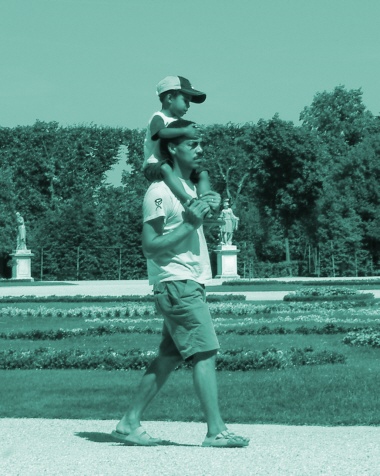Is PCIT right for me?
We’ve tried therapy before. How might PCIT be different?
Many behavior parent training programs teach similar parenting skills, PCIT differs from other programs because it:
- emphasizes in-session parent practice of skills
- parents receive live coaching and feedback related to skills
- parents are required to master specific parenting skills
- PCIT is not session-limited.
- graduation is based on parent demonstration of mastery of skills
- parents rate children's behavior problems as within normal limits before treatment graduation.
How long does it take to complete PCIT?
The average length of treatment typically varies between 12 and 20 sessions. Treatment length is variable based on each family's specific needs. Some families complete treatment in fewer than 12 sessions. Other families take more than 20 sessions to meet treatment graduation requirements.
The length of treatment is likely based on the following factors:
- Family's regular attendance to treatment
- The extent that caregivers engage in quality homework practice in between sessions
- The rate that caregivers display mastery of PCIT skills in session
- The intensity of the child's behaviors at the start of treatment
- The rate at which caregivers report reductions in children's behavior problems
- The extent that the child has other emotional or developmental concerns
Does time-out even work?
- PCIT has over 40 years of research demonstrating that it is a safe and effective intervention that improves the parent-child relationship, increases parenting skills, decreases child conduct problems, and reduces the risk of maltreatment.
- PCIT has been recognized by the National Child Traumatic Stress Network as a trauma-informed intervention.
- PCIT has also been recognized by the California Evidence-Based Clearinghouse for Child Welfare, SAMHSA’s National Registry of Evidence-Based Programs and Practices, and the Federal Administration on Children, Youth and Families in the Child Welfare Information Gateway as being a best practice for the prevention and treatment of child conduct problems and child maltreatment.
- The American Academy of Pediatrics and Centers for Disease Control supports the use of time-out as a best practice for the management of behavior problems and ADHD in young children within the context of building a positive parent-child relationship and reinforcing positive behaviors.
Will time out harm my child?
- The time-out procedure in PCIT is only one component of the treatment, used in the context of a much larger set of strategies that include building a warm, supportive relationship between the caregiver and the child, using positive reinforcement of behavior, and managing misbehavior with proactive, positive strategies. Parents are not taught time-out until they master parenting skills focused on building a nurturing relationship with their child.
- Parents are taught to use time-out in a predictable and consistent manner, so that the child is familiar with the time-out procedure.
- In PCIT, children get clear directions and warnings so they are aware why they are being placed in time-out. Children are given another opportunity to follow the parent’s direction after the time-out. These steps are developmentally sensitive and highly predictable to help promote young children’s learning.
- Time-out in PCIT is the removal of a child from all types of reinforcement (e.g., caregiver attention, toys, screen time) for a specified, short period of time as a consequence for misbehavior. Time-out is effective because it is intended to be boring, or free from reinforcement, but also safe.
- In the PCIT protocol, the caregiver remains in a place where they can observe their child and determines when time-out is over. This is to make sure that time-out is safe and effective. If a child is allowed to come out of time-out on their own, the time-out will not be effective and this likely will lead to an increased number of time-outs.
- The time-out procedure in PCIT is always followed with the caregiver returning to relationship building skills, so the child receives emotional support and positive reinforcement for pro-social behaviors.
